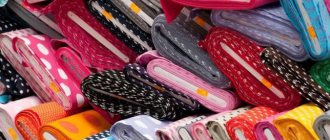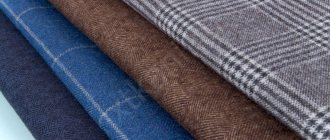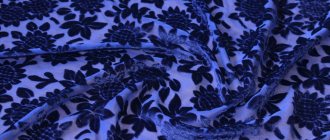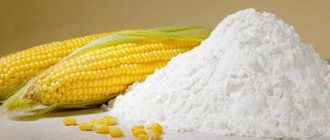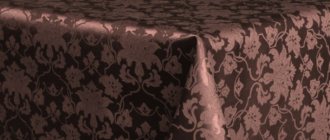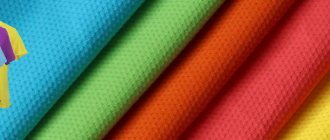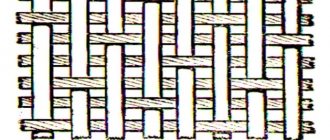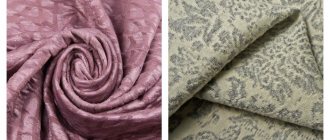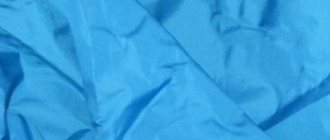Oxford is a popular synthetic fabric, indispensable in the production of casual and sportswear, equipment for recreation and tourism, in the furniture and construction industries. The material is distinguished by a special way of weaving threads, called “matting”. As a result of weaving, a fabric is obtained consisting of convex squares arranged in a checkerboard pattern. Treatment of the surface of the material with polyurethane or polyvinyl chloride ensures high impermeability of Oxford products.
Oxford fabric: scope - now and before
Dense twill fabric with a checkerboard thread pattern began to be produced in the 19th century in Scotland. Oxford students appreciated the quality of the material and began ordering shirts from it. Today, a shirt made of this fabric is a symbol of studying at a prestigious university and an integral part of the dress code of high-status organizations.
In the 19th century, Oxford material was made from cotton and used for clothing. Now these are predominantly synthetic fabrics, and the range of their applications has expanded significantly.
Today they sew from Oxford:
- jackets and windbreakers;
- bags and backpacks;
- tourist equipment and shoes;
- special clothing for hunting and fishing;
- awnings, tents, sun loungers;
- protective suits, overalls and aprons.
History of the origin of the material
The fabric is distinguished by a special way of weaving threads, called “matting”.
A material with a weave of fibers, the pattern of which resembles a reed basket, appeared in the 19th century in Scotland. Unlike conventional weave, in this fabric the warp and weft threads overlap not individually, but in entire groups. The result is a surface covered with relief squares.
Initially, textiles were made exclusively from pure cotton. High-quality, comfortable and durable material has become indispensable in sewing men's shirts. Oxford University students especially loved clothes made from this fabric. This is where the name “Oxford” came from.
Later, the unique textiles gained recognition in other countries. In the 20th century, synthetics, nylon and polyamide began to be added to the fabric, which made it more practical and wear-resistant. Then they developed a completely synthetic material, which was no longer used only for clothing.
A new stage of development was surface treatment with chemical compounds, as a result of which the fabric acquired completely new characteristics:
- waterproof;
- fire resistance;
- protection from exposure to aggressive reagents.
And although the new textiles were completely different from the classic counterpart, the name “Oxford” remained the same.
Characteristics of Oxford material
The composition of Oxford fabric is primarily nylon and polyester. Nylon is a durable and elastic material, which at the same time allows wind to pass through and rustles in the cold. Polyester is less durable, but can withstand higher temperatures, is resistant to chemicals and does not fade in the sun. Depending on the scope of application, the appropriate fabric composition is selected.
Ask a Question
| Properties of Oxford fabric | |
| advantages | flaws |
| Durable material: does not tear, does not wear out when bending. | Impregnation of the fabric makes it water- and airtight. Such clothes are not worn for a long time - you can sweat in them. |
| Lightweight material with a pleasant smooth surface, holds its shape well, and drapes beautifully. | The fabric rustles. In the cold, the sound becomes even louder, so hunters do not wear winter suits made of this material, otherwise they can scare away the animal. |
| Waterproof and stain-resistant fabric. | If the fabric contains nylon, it becomes flammable - one spark will create a hole in the awning or tent. |
| Resistant to low and high temperatures from -50 to +110 C | Clothing and camping equipment made from polyester are more resistant to high temperatures, but they are less durable than nylon. |
| Not affected by chemical and organic solvents. | |
| The bright color remains after numerous washes and does not fade in the sun. | |
| Easy to care for and easy to wash. | |
| Affordable price. | |
Oxford care
Caring for your Oxford is quite simple. This is an unpretentious material that easily removes dirt. If there is damage or the seams need to be strengthened, then Oxford can be glued with “Moment”. The varieties “Crystal”, “Marathon Shoe”, “Universal” are suitable.
Washing and drying
How to dry and wash fabric:
- Water-repellent oxford does not need to be washed. Any dirt can be easily washed off with soapy water. The treated area must be washed with clean water.
- Cotton material is washed at a temperature of 30–40 degrees on a delicate cycle.
- Oxford made of nylon is washed inside out at a temperature not exceeding 40 degrees on a delicate cycle.
- It is not recommended to twist the oxford. Otherwise, creases will remain.
- Products can be dried in a machine on a delicate cycle.
- To wash Oxford items, powders without abrasive particles are used. Stain removers and bleaches are not suitable.
- The fabric is dried in a dark place in a horizontal or vertical position, straightened out. In the sun, matter fades. The fabric dries very quickly. To avoid pinching, it is not recommended to use clothespins.
How to iron material
When dried carefully, oxford does not wrinkle. However, if creases appear on the material, it is important to follow a number of rules:
- Iron only completely dry material. Do not use a steamer or spray the fabric with water.
- The iron temperature should not exceed 110 degrees. You need to iron the fabric as quickly as possible. If you iron at a higher temperature, the fabric will melt.
- Place a layer of gauze between the fabric and the iron. Things are ironed from the inside out.
Decoding the symbols on the fabric
The density of Oxford fabric is indicated by the letter D and a number. Indicators vary from 150 D to 1800 D. The fabric becomes dense due to an increase in the thickness of the fibers, and impregnation with polyurethane and polyvinyl chloride provides protection from moisture, wind and chemical reagents, in addition, it makes the material one and a half to three times stronger.
Ask a Question
When choosing fabric for a specific product, it is worth understanding the fabric markings:
| Marking | Characteristics of Oxford fabric | Scope of application for sewing from Oxford material |
| 150D | The thin fabric drapes well, holds its shape, and is treated with moisture-proof impregnation. | Raincoats, jackets and raincoats. |
| 210D | Quite thick fabric. | Tourist equipment, suits for fishermen and hunters, uniforms for internal affairs officers, life jackets, raincoats and hats. |
| 240D PU | Heavy-duty polyester fabric with polyurethane impregnation - protected from moisture and sunlight. | Tents, camping equipment, equipment for fishermen and hunters. |
| 300D PVC PU | The material is impregnated with polyvinyl chloride and polyurethane. | Shoes, bags, backpacks, travel gear and equipment for fishermen and hunters. |
| 420D PVC PU | Quite durable material. Impregnated with polyurethane and polyvinyl chloride. | Uniforms for employees of law enforcement and departmental organizations, equipment for tourists, fishermen and hunters. |
| 600D PVC PU | The waterproof material is impregnated with polyvinyl chloride and polyurethane. | Trade stalls, awnings, marquees, garden and tourist folding furniture, shoes and suitcases. |
| 1500D | Tough and ultra-durable fabric. | Car awnings, covers for vehicles. |
| 1800D | The most dense and heavy oxford is purchased to order. | Heavy duty awnings. |
What type of fabric is this
Oxford is a modern material of synthetic origin with a special weave of threads - “matting”. Otherwise, this type of weave is called “basket” or “Panamanian”. The canvas is obtained in the form of embossed squares arranged in a checkerboard pattern.
Oxford colors
For its production, polyester or nylon threads of various thicknesses are used. The combination of this type of weave and synthetic fibers provides the material with special strength and reliability. Catalog of fabrics of synthetic origin
The main manufacturers of Oxford shoes: South Korea, China, Germany.
Briefly and to the point: what is good about Oxford?
Modern workwear, be it a waiter's apron or a delivery service employee's windbreaker, should look attractive, bright and aesthetically pleasing. But this is not enough! The employee should feel comfortable in it. In Oxford clothes, he is not afraid of wind, moisture and dust. Such uniforms serve for a long time and are pleasing to the eyes of staff and management, and customers like them.
Do you want to order a functional Oxford uniform? Leave a request on the website and we will contact you to discuss the details of the order.
Ask a Question
What standards are used in manufacturing
When producing fabrics from synthetic fibers, the standards prescribed in GOST 23433-79 are used. Fabrics and piece goods made from chemical fibers." Namely:
- color fastness to light - according to GOST 9733.1-91;
- color fastness to washing - according to GOST 9733.4-83;
- color fastness to ironing - according to GOST 9733.7-83;
- color fastness to friction - according to GOST 9733.27-83;
- air permeability - according to GOST 29298-2005;
- tensile tensile characteristics - according to GOST 3813-72;
- determination of water resistance - according to GOST 3816.
Definition and composition
First, let's discuss what it is - Oxford material and figure out where such an original name for the canvas came from.
The history goes back several centuries - the canvas appeared in the nineteenth century in Scotland and gradually spread throughout the world. A distinctive feature of the material is a pattern similar to a reed basket. This method is called "matting".
Initially, the composition of Oxford fabric was exceptional - 100% cotton. With the development of industry, natural fibers were forced out, and exclusively artificial technology was developed. There are two types of fabric:
- Nylon;
- Polyester.
You can see what the fabric looks like in photos and videos - modern manufacturers make fabrics of different colors, with designs and patterns.
Now you know what it is - oxford fabric, you have studied its history and composition. Let's explore the features of the canvas further!
Briefly about impregnations
The material can be treated with special compounds, which will increase its water-repellent properties. Processing occurs on the reverse side and does not affect the design of the products. The result is a coating that makes the canvas resistant to precipitation and wind.
Impregnations used today:
- with polyvinyl chloride (PVC). Very dense, which has a beneficial effect on barrier properties. But it increases the rigidity of the material: it is difficult to roll, it does not lend itself to draperies.
- with polyurethane (PU). Does not affect the elasticity of the fabric. After processing, the original bending properties are retained. Does not crack or break integrity at low temperatures.
Water repellent properties
Treatment with special compounds increases waterproof properties. There are several varieties of Oxford, which differ in water-repellent properties:
- 200-300 mm: clothing will protect from light snow or rain. But it won't last long. If you stay in the rain for a long time, jackets and raincoats will get wet;
- 300-500 mm: if you get caught in heavy rain, you don’t have to worry about dry clothes for an hour, after which their waterproof properties decrease;
- 800 mm: rest assured, you will never get wet in such clothes;
- 1000-3000 mm: awnings and tents that specifically protect against precipitation are made from this material, and winter clothing is sewn, which provides the greatest protection.
The marking index will tell you about moisture protection, which indicates the value of the water column that the fabric can withstand while remaining waterproof.
What does the marking tell you?
When buying fabric, be sure to study the label, which provides all the information. It often contains symbols that not everyone understands. Meanwhile, this is important, since performance characteristics depend on these indicators. You can often see:
- PVC - the material is treated with polyvinyl chloride impregnation.
- PU – polyurethane impregnation was used.
- 300 d PVC PU – the first symbols indicate the density. Next is an indication of a hybrid material that has been impregnated with polyvinyl chloride and polyurethane. 2 compositions can be used simultaneously if it is necessary to improve quality indicators: increase heat resistance and inertness to chemicals, increase thermal insulation, eliminate electrostaticity.
- RS (rip stop). The presence in the structure of the material of a thickened, reinforcing thread, which increases its strength.
If you see the designation 100% cotton, it means that this is a completely natural fabric.
Flaws
Despite a lot of advantages, almost like any other, this fabric also has its own disadvantages.
- Oxford, made from synthetic fibers and impregnated with PVC or polyurethane, exhibits poor air exchange and “does not breathe.” However, the disadvantage should be taken into account based on the purpose of the product. Obviously, if we are not talking about clothes, but, for example, about a bag, this minus will be very conditional.
- Nylon - capable of accumulating static electricity. In addition, fabric made of nylon threads (for example, tent fabric) can easily be melted and burned by an accidental spark from a fire; it is not very resistant to exposure to sunlight.
- And one more of the not critical, but disadvantages of Oxford is that in the cold the fabric hardens and, as a result, makes a characteristic “rustling” sound, for which hunters do not really like it. This is especially true for high-density Oxford (for example, 600), which can be used as a basis for workwear.
All this points to the fact that it is important to select this fabric depending on how and where it will be used.
Reviews
Olga, 34 years old, Nizhny Novgorod: “My husband and son go rock climbing. I sewed equipment for them, and I have no complaints. Does not allow moisture and dirt to pass through, is not blown, this fabric does not care about the weather conditions! It washes easily and does not pay attention to the chemicals in the washing powder. My men are happy!”
Sergey, 43 years old, Kazan: “Friends gave me a whole hunting set for my birthday, all made of Oxford fabric. I actively use a jacket, pants and a backpack. Super thing! It’s been three years now and they’re still like new.”
Svetlana, 28 years old, Saratov: “I sewed a jacket to order from a tailor, I’m wearing it for the third season. Warm, not blown, precipitation is not terrible. I will definitely sew again! Unkillable! The fabric is, of course, thick, you can’t wear a T-shirt like that every day...”
Of course, Oxford will be useful to every person, regardless of his goals and objectives. Thanks to its excellent characteristics, it is widely used both among professionals working with fabrics and among ordinary people.
Material Cordura (cordura)
This material was developed by DuPont, which is also known in the world as a developer of cellular and mobile phones. The Cordura backpack was developed due to the needs of the army, the material was used for both clothing and minor military equipment.
The peculiarity of this material is the use of twisted and cut fibers. Sometimes cotton may be added to the composition, due to which the structure may have a rough surface. This feature increases the material’s resistance to wear, tear, and abrasion. This is the best material for a backpack in rainy weather, as the cordura is water-repellent.
Benefits of Cordura
- The material can be of different densities;
- Attractive appearance;
- Over time, does not change its structure and appearance;
- Excellent water-repellent characteristics.
Areas of use
We have already discussed the density of different types of material - it is this indicator that directly determines the scope of application. We will note common areas of use - see for yourself what a high-quality Oxford can be useful for:
- Furniture upholstery;
- Footwear industry;
- Production of wallets, bags, backpacks;
- Equipment for tourism - tents, covers and awnings;
- Sportswear and activewear;
- Children's clothing - inserts on knees and elbows;
- Equipment for law enforcement agencies;
- Covers and linings for strollers and children's sleds.
We talked in great detail about Oxford fabric - customer reviews will be the real icing on the cake of our article and will perfectly complete the review. Read comments from real people to learn more about this material and make a decision about buying such things. There is a lot of interesting information about waterproof materials here.
